On This Page
The Best Latex Mattress of 2025
Our Top Picks
-
Best Overall Mattress
WinkBeds EcoCloud -
Best Value Mattress
EcoSleep Hybrid -
Best Mattress for Pressure Relief
Birch Mattress -
Most Comfortable Mattress
PlushBeds Botanical Bliss -
Best Mattress for Side Sleepers
Nolah Natural 11 -
Best Mattress for Combination Sleepers
DLX LatexLux Hybrid -
Best Mattress for Back Pain
Latex for Less Hybrid Latex Mattress -
Best Mattress for Couples
FloBeds vZone 12" Natural Latex Mattress
Best Overall Mattress
With WinkBeds’ EcoCloud, you get a durable latex hybrid that lightly contours to your body without hugging too closely. Zoned comfort and support layers provide extra pushback around your chest and hips, preventing these areas from sinking excessively, and cooling materials beneath the surface resist heat retention and wick away moisture.
Pros & Cons
Pros
- Latex hybrid design balances contouring and bounce
- Zoned layers deliver extra support for the midsection
- Cover made with breathable, moisture-wicking materials
Cons
- Plush Talalay latex lacks the firmness needed by sleepers over 230 pounds
- Responsive surface may create too much motion transfer for couples
Ratings
Our Take
Best Value Mattress
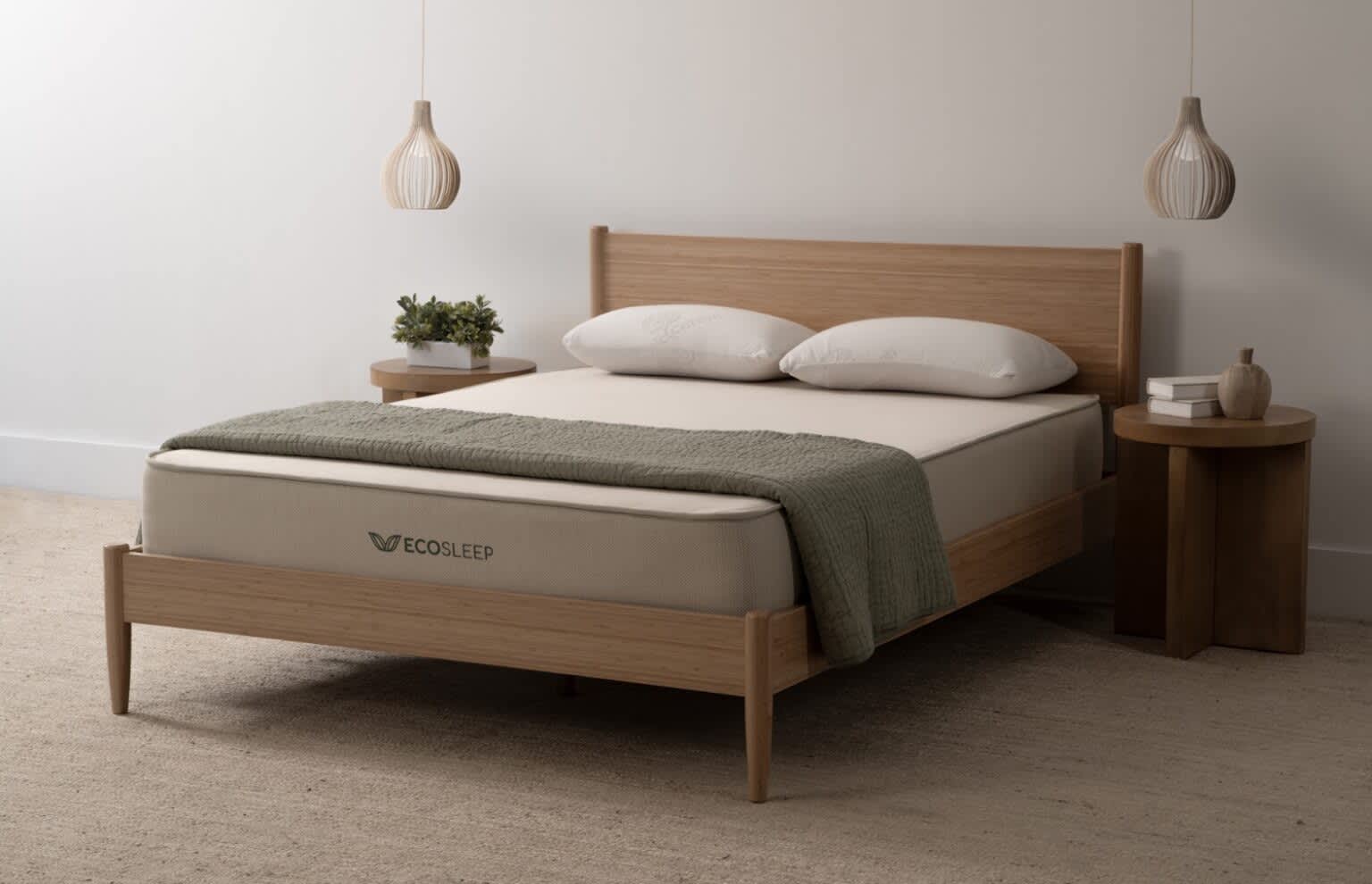
The EcoSleep Hybrid features responsive latex over a robust coil system, giving the mattress a highly supportive feel. Many of the back and stomach sleepers on our team enjoyed the bed’s surface-level bounce and gentle cradling.
Pros & Cons
Pros
- Highly competitive price-point for a latex mattress
- Durable hybrid design combines natural latex and sturdy coils
- Little to no off-gassing after unboxing
Cons
- Stomach sleepers over 130 pounds may prefer a firmer bed
- May not relieve enough pressure for some
Ratings
Our Take
Best Mattress for Pressure Relief

The Birch Mattress is constructed with materials that are sustainably sourced, so the mattress should appeal to eco-conscious shoppers. The latex hybrid design also offers excellent cooling, strong edge support, and significant bounce.
Pros & Cons
Pros
- Latex design has a responsive, bouncy feel
- Made with naturally breathable latex and wool
- Strong edge support
Cons
- Not suitable for sleepers with a latex allergy
- Side sleepers under 130 pounds may not receive enough cushioning
Ratings
Our Take
Most Comfortable Mattress
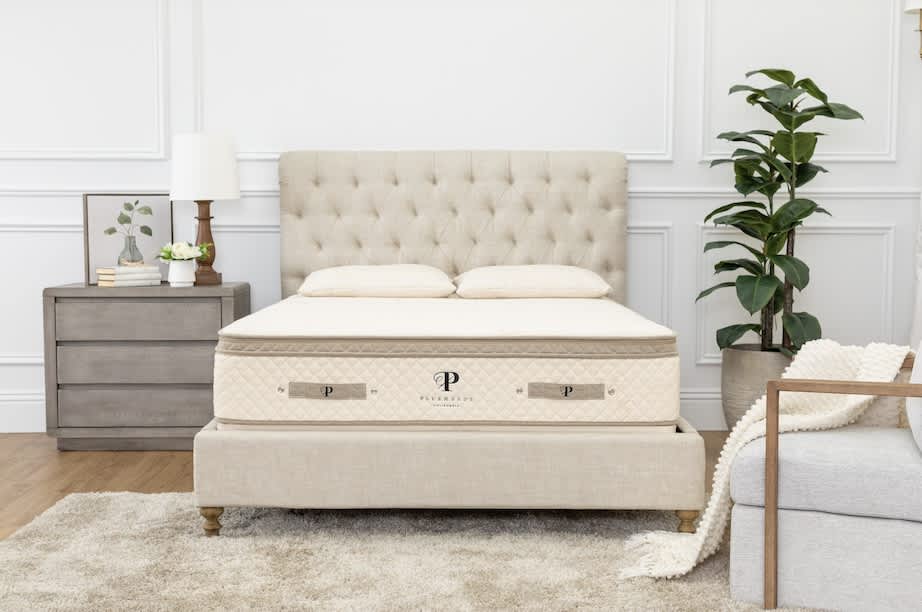
The PlushBeds Botanical Bliss offers a strong balance of support and bounce, but the plush wool comfort layer is what sets it apart from many of the latex models we’ve tested. Multiple profile and firmness options make this suitable for a wide range of sleepers.
Pros & Cons
Pros
- Available in three heights and two firmness levels
- Responsive surface for easy movement and combination sleepers
- GOLS-certified Talalay latex
Cons
- Responsive surface may feel too bouncy for light sleepers
- Side sleepers over 230 pounds might prefer a softer model
Ratings
Our Take
Best Mattress for Side Sleepers
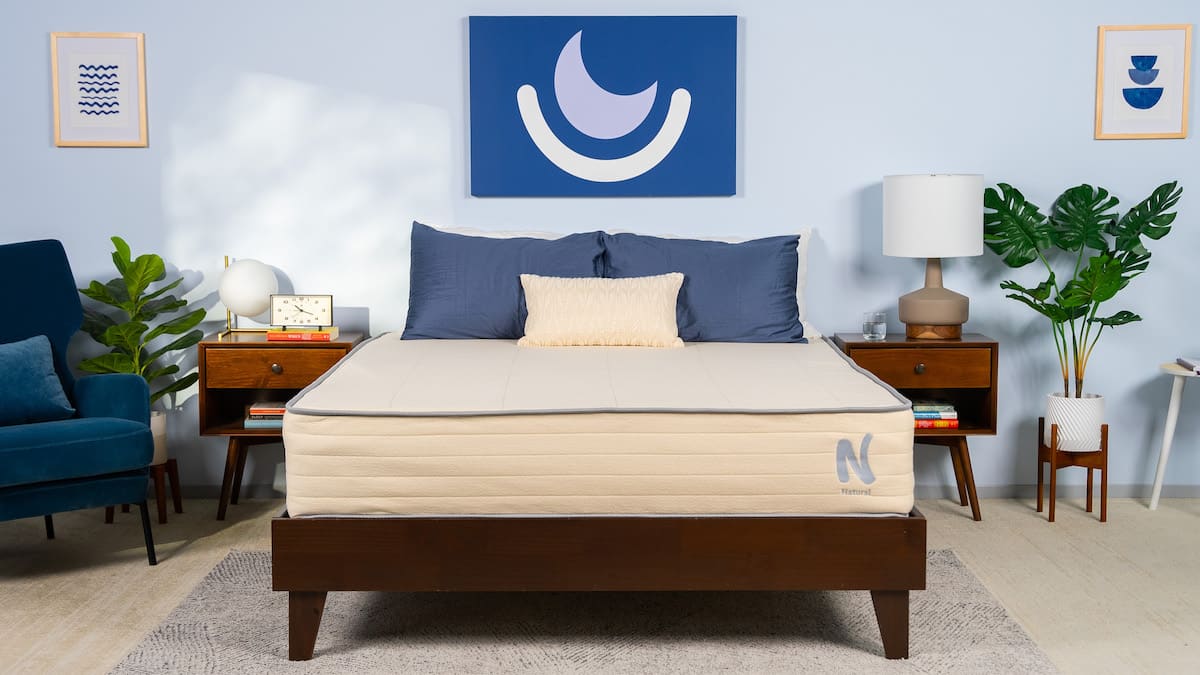
Nolah’s Natural 11 is a solid choice for side sleepers, especially those who haven’t found other latex hybrids comfortable. A balanced medium firm (6) feel with zoned coil support delivers extra cushioning for the shoulders and hips, two areas prone to pressure buildup when you lie on your side, and the latex layers are plush enough to promote spinal alignment without hugging too closely.
Pros & Cons
Pros
- Latex comfort layers create a soothing bounce on the surface
- Zoned coils provide extra support for the shoulders and hips
- Breathable materials ensure excellent cooling and temperature control
Cons
- Responsive design may produce motion transfer and disrupt sleep for couples
- Mattress is fairly heavy and difficult to lift and move
Ratings
Our Take
Best Mattress for Combination Sleepers

The DLX LatexLux Hybrid is quite responsive, allowing you to change sleep positions without sinking into the sleep surface. Breathable, moisture-wicking comfort layers also make the mattress a great match for hot sleepers.
Pros & Cons
Pros
- Breathable design doesn’t absorb too much heat and sleeps cool
- Available in four firmness levels and two profiles
- Perimeter coils are reinforced to bolster edge support
Cons
- Limited options for side sleepers under 130 pounds
- Responsive layers may generate motion transfer and disrupt sleep for couples
Ratings
Our Take
Best Mattress for Back Pain
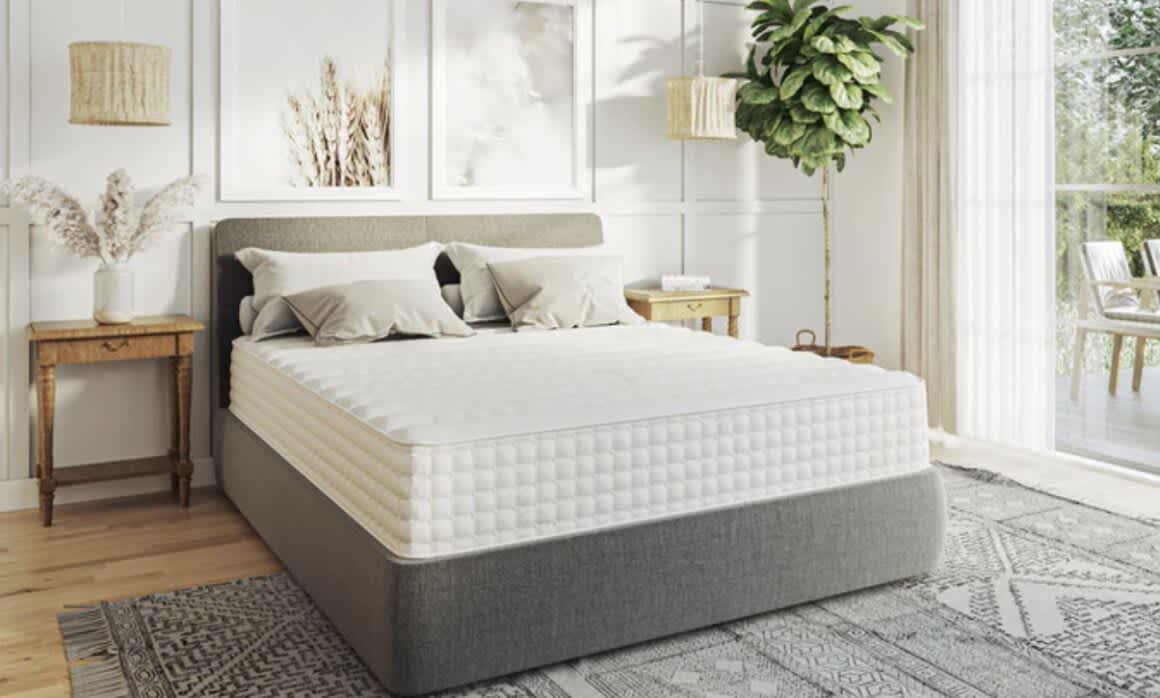
The Latex for Less Hybrid Latex Mattress strikes a perfect balance between support and gentle cradling. With two firmness options available, we found the bed is well suited for a wide array of sleepers regardless of sleep position and body type.
Pros & Cons
Pros
- Latex hybrid design provides excellent cooling and responsiveness
- Available in seven sizes and two firmness levels
- Organic certifications ensure sustainably sourced Dunlop latex
Cons
- Couples might prefer a bed with stronger motion isolation
- Side sleepers over 230 pounds may need more pressure relief
Ratings
Our Take
Best Mattress for Couples
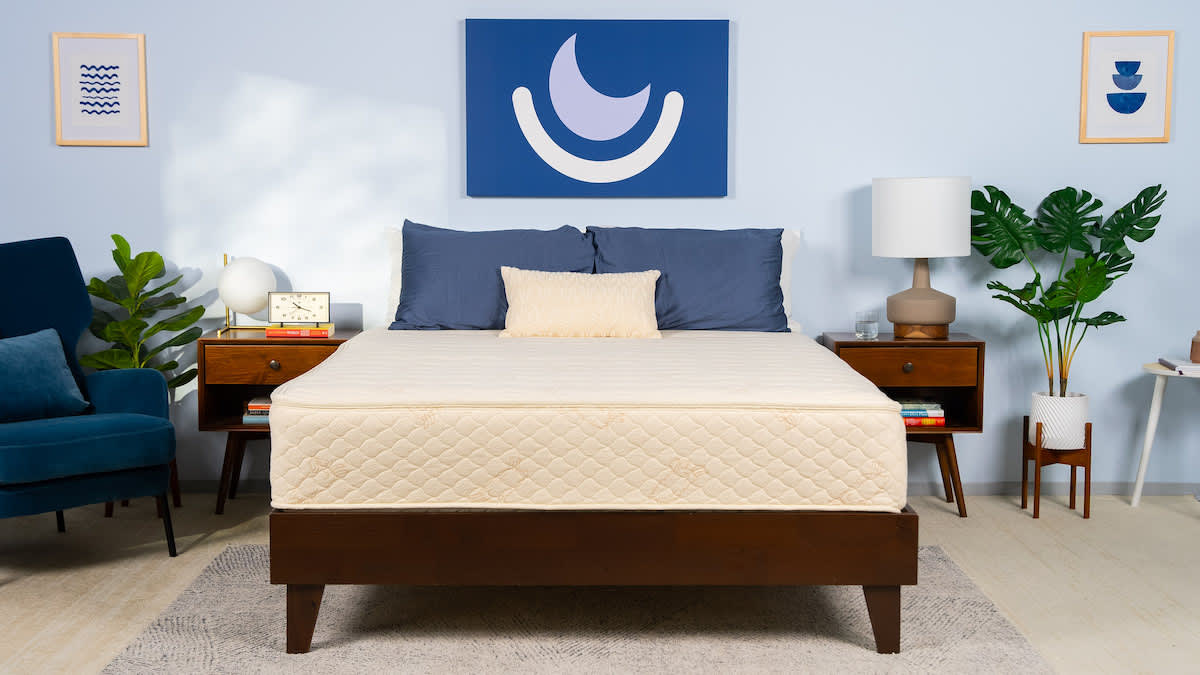
The FloBeds vZone 12” Natural Latex Mattress comes in a wide array of firmness options, but the truly exceptional feature is the option to personalize firmness for each sleeper. We highly recommend this bed for couples.
Pros & Cons
Pros
- Four firmness options for all body weights and sleep positions
- Sleepers can select a different firmness for each half of the bed
- All-Talalay latex design offers gentle contouring and natural cooling
Cons
- Softer options lack strong edge support
- Performance differs widely between firmness levels
Ratings
Our Take
Compare Our Top Picks
| Mattress | Mattress Type | Ideal For | Value | Sleep Trial |
| WinkBeds EcoCloud | Hybrid | Hot Sleepers | Good Value | 120 nights (30-night requirement) |
| EcoSleep Hybrid | Hybrid | Back Sleepers | Great Value | 120 nights (30-night requirement) |
| Birch Mattress | Hybrid | People With Back Pain | Good Value | 100 nights (30-night requirement) |
| PlushBeds Botanical Bliss | Latex | Hot Sleepers | Fair Value | 100 nights (30-night requirement) |
| Nolah Natural 11 | Hybrid | Side Sleepers | Good Value | 120 nights |
| DLX LatexLux Hybrid | Hybrid | Couples | Great Value | 120 nights (30-night requirement) |
| Latex for Less Hybrid Latex Mattress | Hybrid | Couples | Great Value | 120 nights |
| FloBeds vZone 12" Natural Latex Mattress | Latex | Couples | Great Value | 100 nights |
When you lie down on a latex mattress, you almost feel as if you’re floating. It’s a feeling most people either love or hate, so if possible, I’d recommend either trying one out before making a purchase, or making sure to choose a model that comes with a sleep trial.
What Is a Latex Mattress?
Latex is a rubber-like material that can be sourced naturally from rubber trees or manufactured synthetically from petrochemicals. While some mattresses are constructed entirely of latex, it’s more common to find a layer of latex atop a support core of pocketed coils. These latex hybrids combine the benefits of both mattress types.
Compared to other types of mattresses, latex beds have a more responsive feel and moderate pressure relief. While latex doesn’t offer the deep body hug of memory foam, it lasts longer and regulates temperature better than most foam.
Dunlop vs. Talalay Latex
Dunlop and Talalay latex are forms of latex commonly used in mattresses. Both can contain natural latex, synthetic latex, or a blend of both materials. They differ based on how the latex is manufactured.
Dunlop latex is poured and baked in a mold. This results in a dense, firm, and bouncy feel. Talalay latex involves additional steps in the manufacturing process, including frothing the latex before baking. This creates a lighter, less dense latex with a bit more cushion.
Video: Latex vs. Memory Foam vs. Hybrid Mattresses
Watch our video to learn more about the similarities and differences between the three major mattress types.
Should You Buy a Latex Mattress?
Latex mattresses are known for their bouncy and responsive feel, making them a great option for combination sleepers and people looking for the best mattress for sex. Natural latex mattresses are also a good fit for eco-conscious shoppers who value environmental sustainability.
However, latex mattresses aren’t the best fit for everyone. They typically come with a higher price tag and are heavier than other mattress types, making them less convenient to move. Latex mattresses also offer less contouring than memory foam, which could be a deciding factor for side sleepers and people under 130 pounds.
What to Consider in a Latex Mattress
To find the best latex mattress, consider your own needs as well as factors like latex density, firmness, certifications, and price.
Latex mattresses are often called hypoallergenic because the material resists the development of mold better than other materials. That said, around 4% of people are allergic to the sap of rubber trees and should avoid mattresses that contain natural latex.
While synthetic latex won’t trigger a latex allergy, new mattresses made from synthetic materials can off-gas an odor from volatile organic compounds (VOCs), which can cause symptoms for people sensitive to odors.
Certifications to Look For
When selecting a latex mattress, there are several common certifications that ensure the product’s quality and safety:
- Global Organic Latex Standard (GOLS): GOLS-certification ensures that a product uses latex that is organic and naturally sourced. It also places limits on off-gassing and the use of fillers.
- Rainforest Alliance: Being certified by the Rainforest Alliance means that a manufacturer meets a broad range of standards related to environmental and economic sustainability.
- OEKO-TEX: This certification ensures that every material used in a mattress has been tested for its safety to human health.
Density describes how heavy something is for its size. For latex mattresses, density is measured in pounds per cubic foot (PCF). Latex density affects how a mattress feels and its performance. Higher density latex provides firm support and durability, whereas lower density latex offers a softer, more yielding sleeping surface and better cushioning.
Firmness is how soft or hard a bed feels. Latex mattresses generally feel firmer compared to all-foam models, although this varies depending on the type of latex and other materials in the mattress. Your ideal firmness level should align with your body weight and preferred sleep position.
Latex mattresses generally range from $1,600 to $2,000 for a queen, making them more expensive than other mattress types. The cost is influenced by the type of latex, the thickness of each layer, and additional materials used in the bed’s construction.
Discover More Mattress Solutions
If you’re not sure that a latex mattress is right for you, check out our guides to other popular mattress types.
Mattresses by Construction
Our approach to testing latex mattresses combines expert knowledge from our Seattle-based testing team and our extensive product testing methodology. We collect data using hands-on tests and high tech tools. This careful approach covers everything from figuring out how a mattress distributes weight to measuring levels of off-gassing.
Our seasoned sleep experts represent different body types and sleep preferences, which ensures that our reviews guide you to the best latex mattress for your needs.
Frequently Asked Questions
Sleeping on a latex mattress feels supportive and slightly bouncy. While latex gently cradles the body, you won’t sink deeply into it like memory foam. Latex mattresses are a good choice for those who prefer a firm, responsive, and cool sleep surface.
A queen size latex mattress usually costs around $1,600 to $2,000, though we occasionally find value models priced closer to $1,000. Of course, the price of a latex mattress varies based on the type of latex, overall quality, and the brand.
Choosing between a latex and memory foam mattress depends on what you’re looking for. Latex mattresses are bouncier and more durable, ideal for sleepers over 130 pounds and those who prefer a cooler bed. They’re pricier but last longer.
Memory foam offers better contouring and pressure relief for people under 130 pounds. While memory foam may retain more heat, many models are now made with cooling features for enhanced temperature regulation.
While latex mattresses are a great choice for most people, they do have some drawbacks. Disadvantages include their higher cost and heavier weight compared to other mattress types. Additionally, they offer less body contouring, which doesn’t suit people who like the hug of memory foam.
Latex mattresses are great for back pain. Gentle contouring helps the body maintain proper spinal alignment. The natural resilience of latex evenly distributes body weight, reducing pressure on sensitive areas like the lower back.
Latex mattresses are renowned for their durability, with the longest expected lifespan of any mattress type. This rubber-like material is highly resistant to sagging and softening, helping it maintain its shape and support over time.
